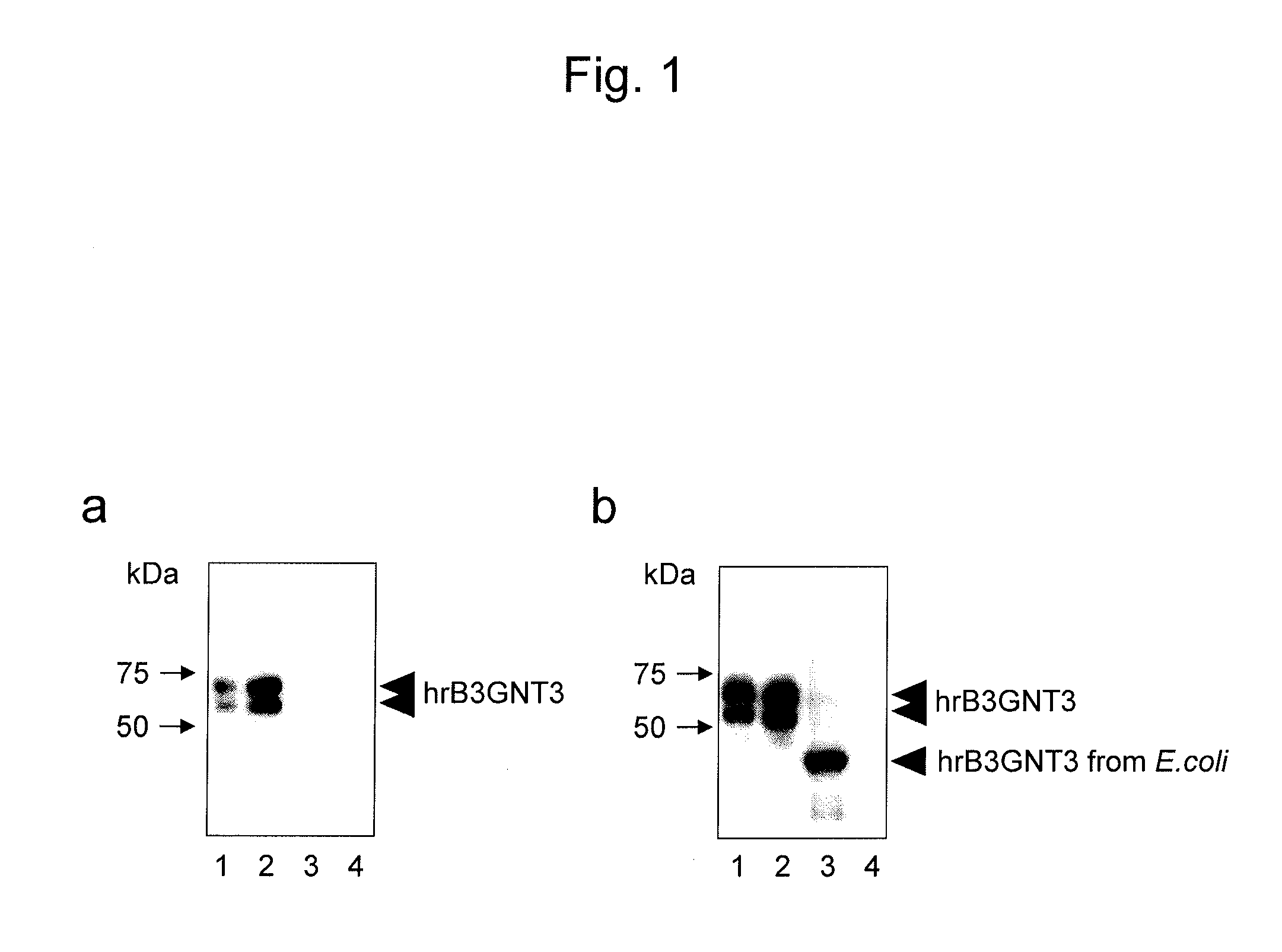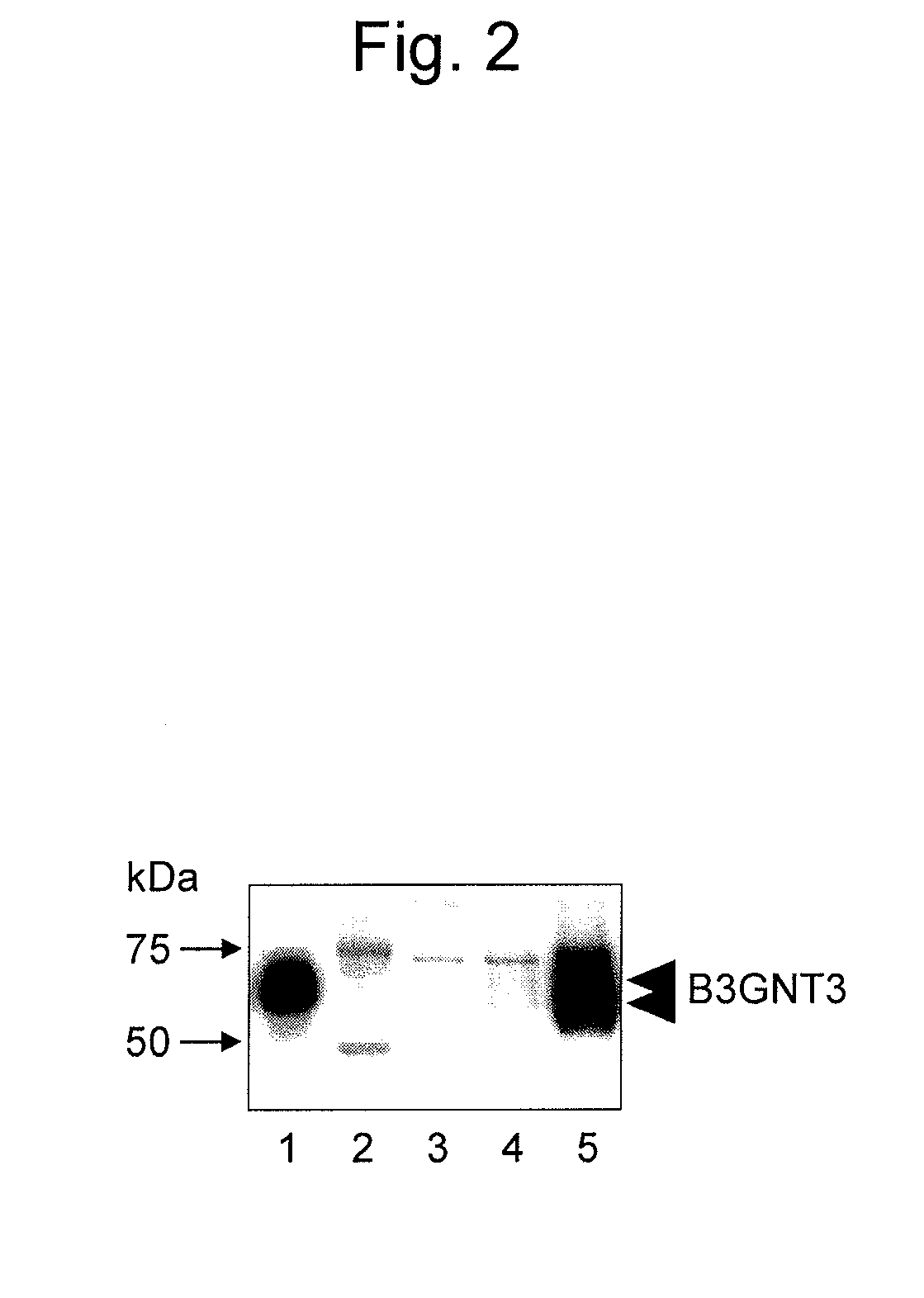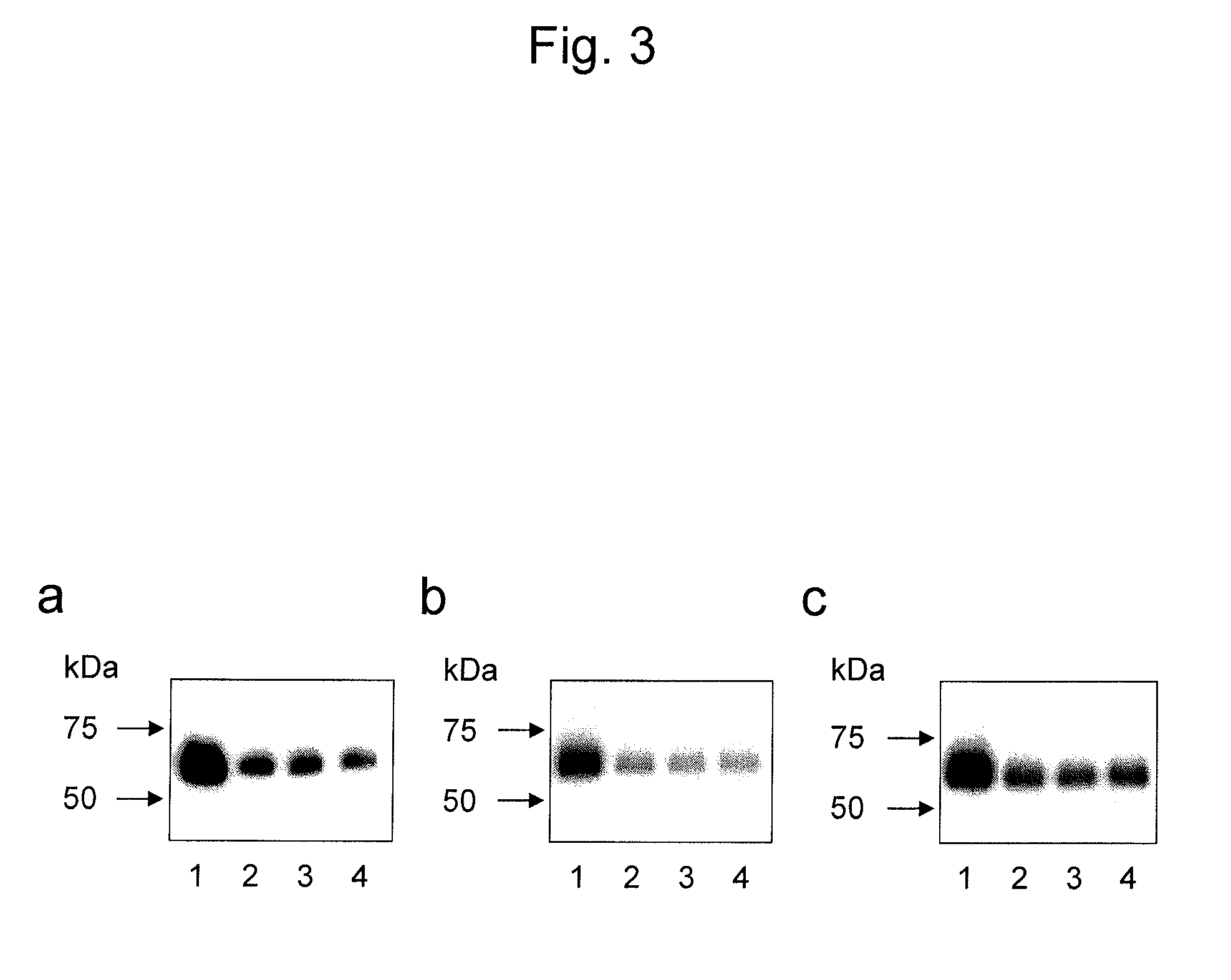Antibody for detecting epithelial ovarian cancer marker and method for diagnosing epithelial ovarian cancer
- Summary
- Abstract
- Description
- Claims
- Application Information
AI Technical Summary
Benefits of technology
Problems solved by technology
Method used
Image
Examples
example 1
Preparation of Anti-B3GNT3 Antibody and Hybridoma Producing the Antibody
1. Selection and Preparation of Immunogen
[0149]An immunogen B3GNT3 gene was selected by real-time PCR analysis on transcripts of a total of 186 glycosyltransferases known in the art in ovarian cancer cell lines RMG-I, RMG-II, and RMG-V (all derived from clear cell adenocarcinoma), RMUG-S (derived from mucinous adenocarcinoma), peripheral blood cells, and normal tissues of the large intestine, the liver, and the stomach. Specifically, their transcription levels in the ovarian cancer cell lines and the normal tissues were ranked by the comparison of mean values and the comparison of maximum values to select a top glycosyltransferase as an ovarian cancer marker candidate. B3GNT3, one of the selected candidates, was ranked in 12th in terms of the mean value and in 6th in terms of the maximum value and placed in a higher rank than that of GAT (mean value: No. 14 and maximum value: No. 13) and β1,3-galactosyltransfera...
example 2
Confirmation of Antigen Specificity of Monoclonal Antibody
[0161]The hybridoma-derived anti-B3GNT3 monoclonal antibodies (GT117-2 antibody and GT117-3 antibody) obtained in Example 1 were studied for their antigen specificity.
(Method)
[0162]2 ng of the FLAG-B3GNT3 polypeptide fragment obtained in Example 1, 2 ng of the B3GNT3 polypeptide fragment obtained by the cleavage of the FLAG tag from the fragment through enzymatic treatment, 5 μL of a culture supernatant (supernatant obtained by: incorporating the inserted fragment of pIRES-F-puro3-B3GNT3 into a pET20b vector for secretion; transferring the obtained vector for expression to an E. coli BL21 strain; and performing induction treatment by a routine method using IPTG) of E. coli allowed to express an untagged recombinant B3GNT3 polypeptide fragment, and 0.1 μL of pool normal human serum (NHS) containing a serum mixture from a plurality of healthy adults were each electrophoresed using a 10% polyacrylamide gel under SDS-PAGE reduced...
example 3
Detection of B3GNT3 Polypeptide Fragment in Sample of Test Subject and Culture Supernatant of Epithelial Ovarian Cancer Cell Line Using Anti-B3GNT3 Antibody of the Present Invention
[0164]The GT117-3 antibody obtained in Example 1 was confirmed for its ability to detect the epithelial ovarian cancer marker B3GNT3 polypeptide fragment of the present invention in samples of test subjects (peritoneal lavage fluids of epithelial ovarian cancer patients) and culture supernatants of epithelial ovarian cancer cell lines.
(Method)
[0165]Peritoneal lavage fluids collected from epithelial ovarian cancer patients, culture supernatants of three ovarian cancer cell lines (RMG-I, RMG-V, and RMUG-S), and the FLAG-B3GNT3 polypeptide fragment as a control were each electrophoresed on a 10% polyacrylamide gel and transferred to a PVDF membrane. Each membrane was blocked with PBS containing 5% skimmed milk. The membrane was reacted with the GT117-3 antibody (1 μg / mL) labeled using a biotin labeling kit (...
PUM
| Property | Measurement | Unit |
|---|---|---|
| Light | aaaaa | aaaaa |
Abstract
Description
Claims
Application Information
 Login to View More
Login to View More - R&D
- Intellectual Property
- Life Sciences
- Materials
- Tech Scout
- Unparalleled Data Quality
- Higher Quality Content
- 60% Fewer Hallucinations
Browse by: Latest US Patents, China's latest patents, Technical Efficacy Thesaurus, Application Domain, Technology Topic, Popular Technical Reports.
© 2025 PatSnap. All rights reserved.Legal|Privacy policy|Modern Slavery Act Transparency Statement|Sitemap|About US| Contact US: help@patsnap.com



